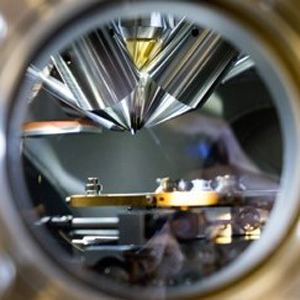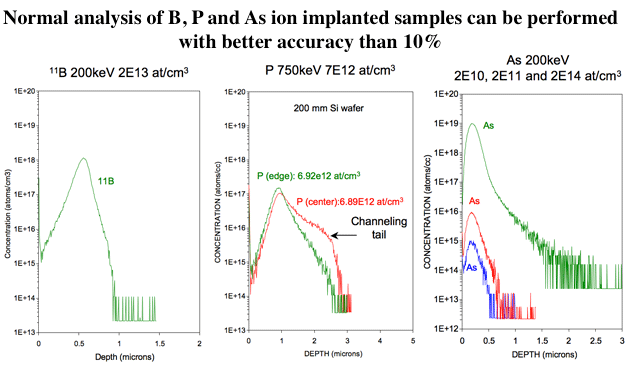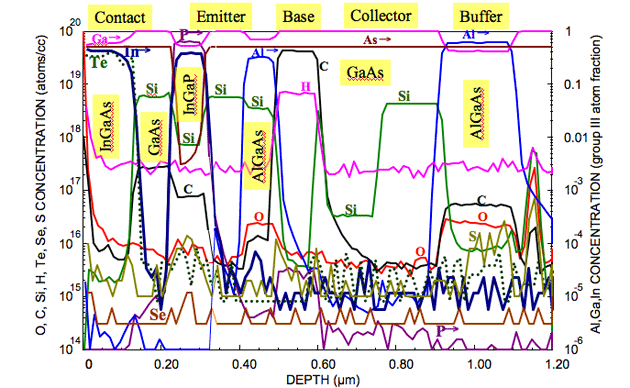What is the difference between magnetic field type SIMS and quadrupole type SIMS?
Home » What is the difference between magnetic field type SIMS and quadrupole type SIMS?
SIMS consists of (1) a “primary ion optical system” which bombards the sample with ions and performs sputtering, (2) a “sample stage”, and (3) a “secondary ion optical system” that detects secondary ions emitted from the sample surface by sputtering. Secondary ion optics mainly use “double-focusing mass spectrometers” and “quadrupole mass spectrometers”.
SIMS using double-focusing mass separation method is called “magnetic-sector SIMS”. When using a quadrupole mass spectrometer for mass separation, the technique is called “quadrupole SIMS” or “Q-pole SIMS”.
Another mass separation method uses a Time-Of-Flight, mass spectrometer or “TOF-SIMS”. For the features of TOF-SIMS, please refer to “What is the difference between SIMS and TOF-SIMS? Please refer to “Dynamic SIMS and Static SIMS”.

The main feature of magnetic field type SIMS is that high-mass resolution measurement and high-sensitivity measurement are possible. However, since a magnetic field is used for the detector, time is required to stabilize the magnetic field strength for the target element. Therefore, there is a restriction to limit the number of analytical elements to several.
On the other hand, in quadrupole SIMS, the mass is separated by applying a high-frequency electric field to the quadrupole rod structure of the detector, so the switching speed of the mass spectrometer is high, so many different elements are analyzed together. In addition, since the sample stage is at ground potential, low-energy primary ion bombardment can be used to increase depth resolution and thus optimize the detection of elements very near the sample surface.
The table below summarizes the features of magnetic field type SIMS instruments and quadrupole type SIMS instruments. EAG uses 26 magnetic field type SIMS instruments and 18 quadrupole type SIMS instruments to optimize each analysis according to the analysis material and analysis request. Please refer to the SIMS analysis introduction page for the configuration of each instrument type.
Comparison between magnetic field type and quadrupole type SIMS
| Quality analyzer |
Main equipment manufacturers |
Pros | Cons |
|---|---|---|---|
| Magnetic field type | Cameca |
|
|
| Quadrupole | PHI Cameca (Atomika) |
|
|
Analysis example by magnetic field type SIMS
An example of the analysis of a sample in which B, P, and As ions are implanted in Si is shown below.
Any element can be measured with high sensitivity. In addition, since P has a mass number of 31, it is affected by an interference element with a mass number of 31 formed by Si, with a mass number of 30, and H. Therefore, in P analysis, it is necessary to perform analysis in high mass resolution mode using magnetic field type SIMS. Regarding the interfering elements, please refer to the item “What is the effect of mass interference”?

Analysis example by quadrupole SIMS
Below is an example of analyzing dopants and impurities in a multi-layered sample such as InGaAs / GaAs / InGaP.
In compound semiconductor devices, quadrupole SIMS, which can measure many elements simultaneously, is useful because it is necessary to examine the concentration distribution in a thin film multilayer structure.

Would you like to learn more about magnetic field type and quadrupole type SIMS?
Contact us today for your magnetic field type SIMS and quadrupole type SIMS needs. Please complete the form below to have an EAG expert contact you.